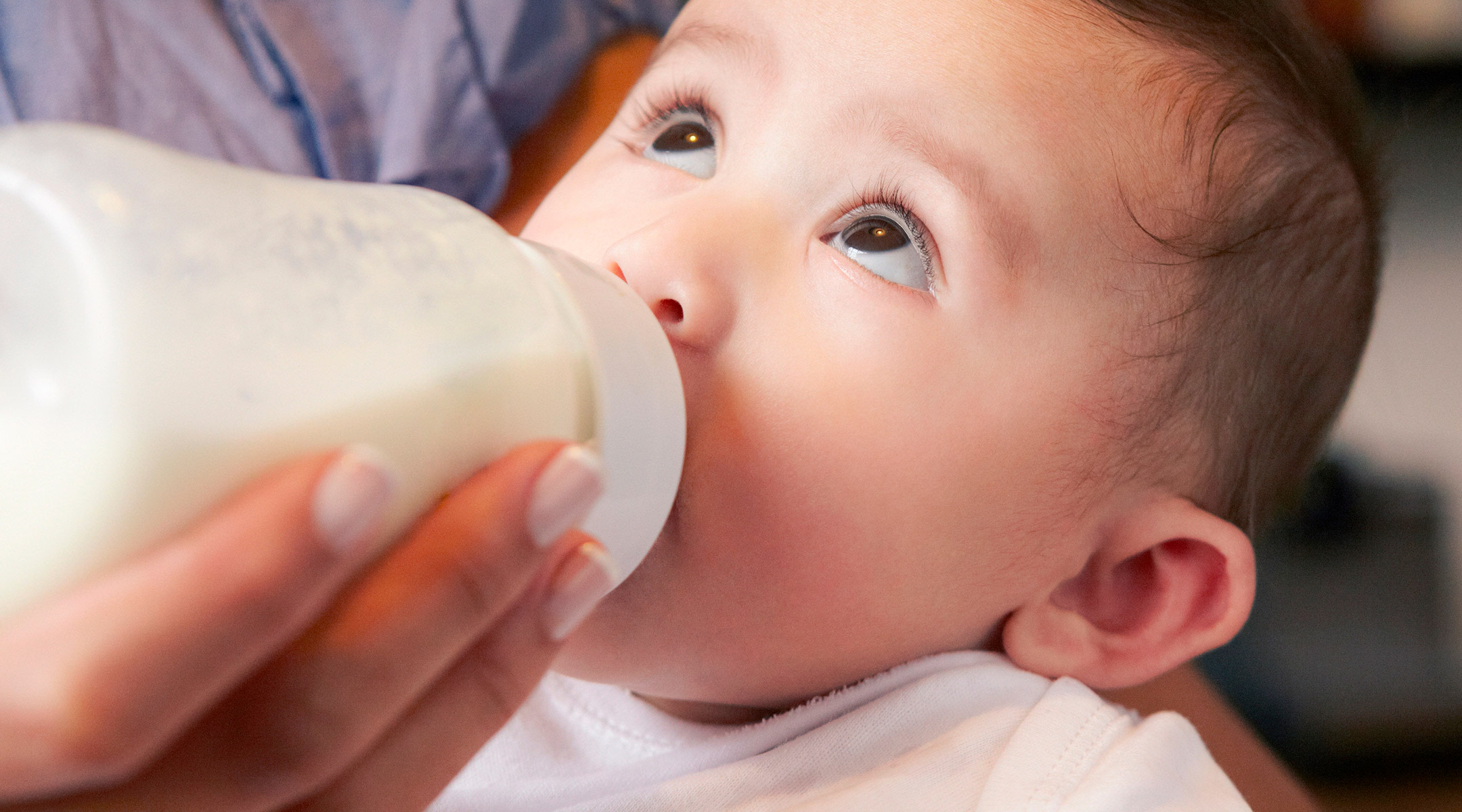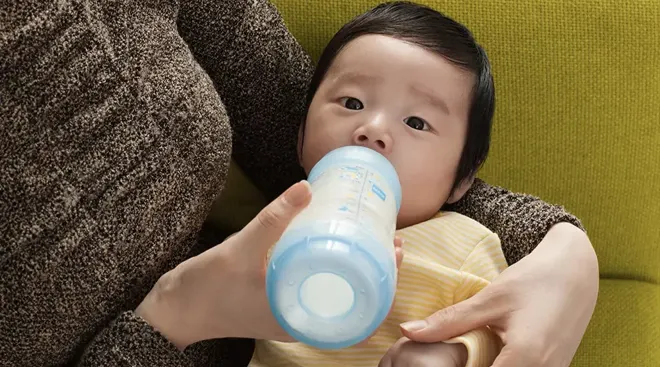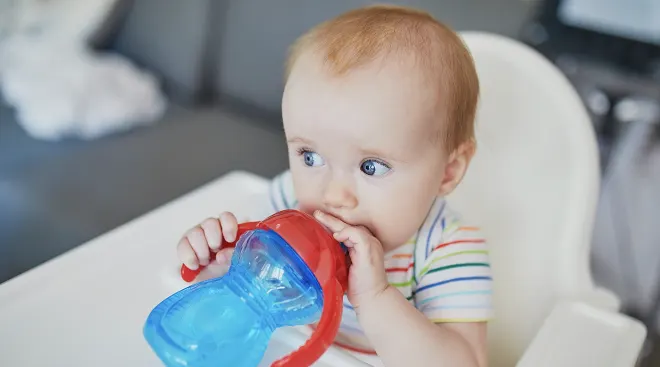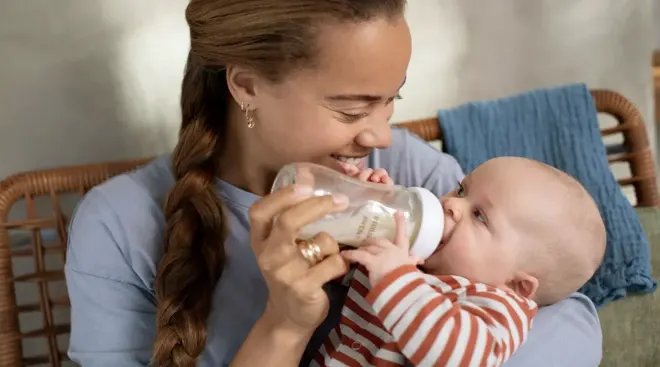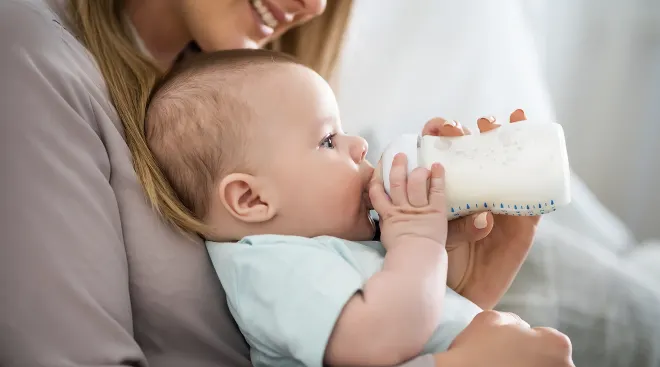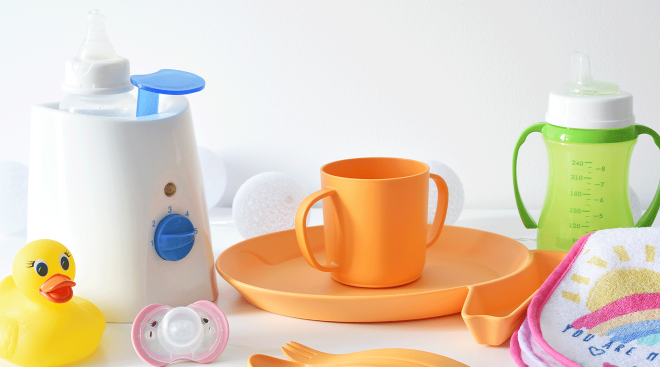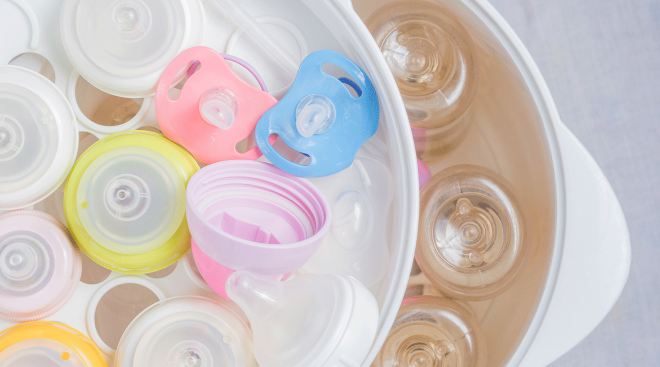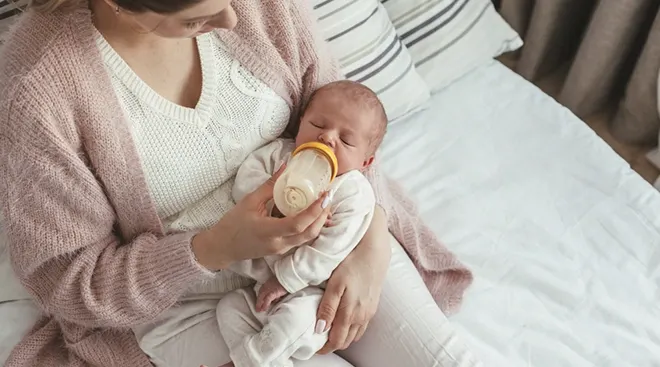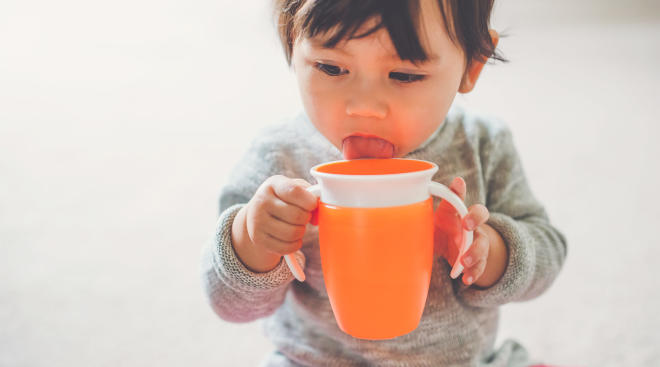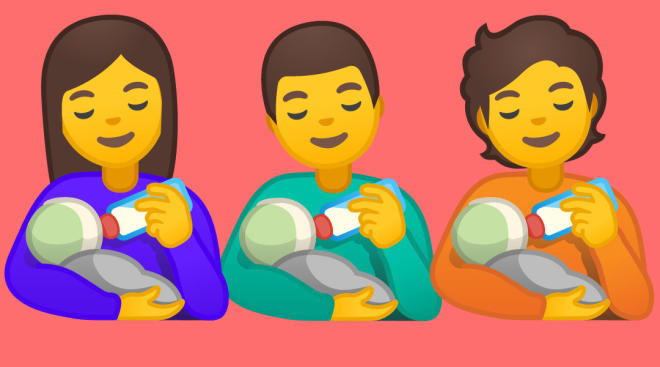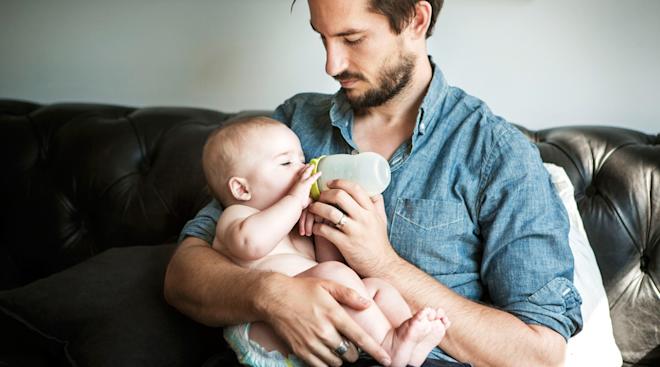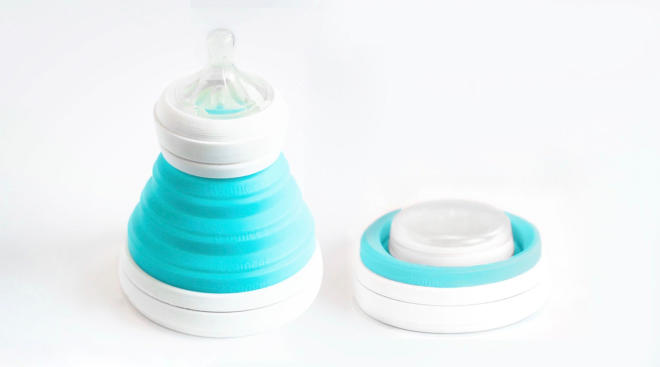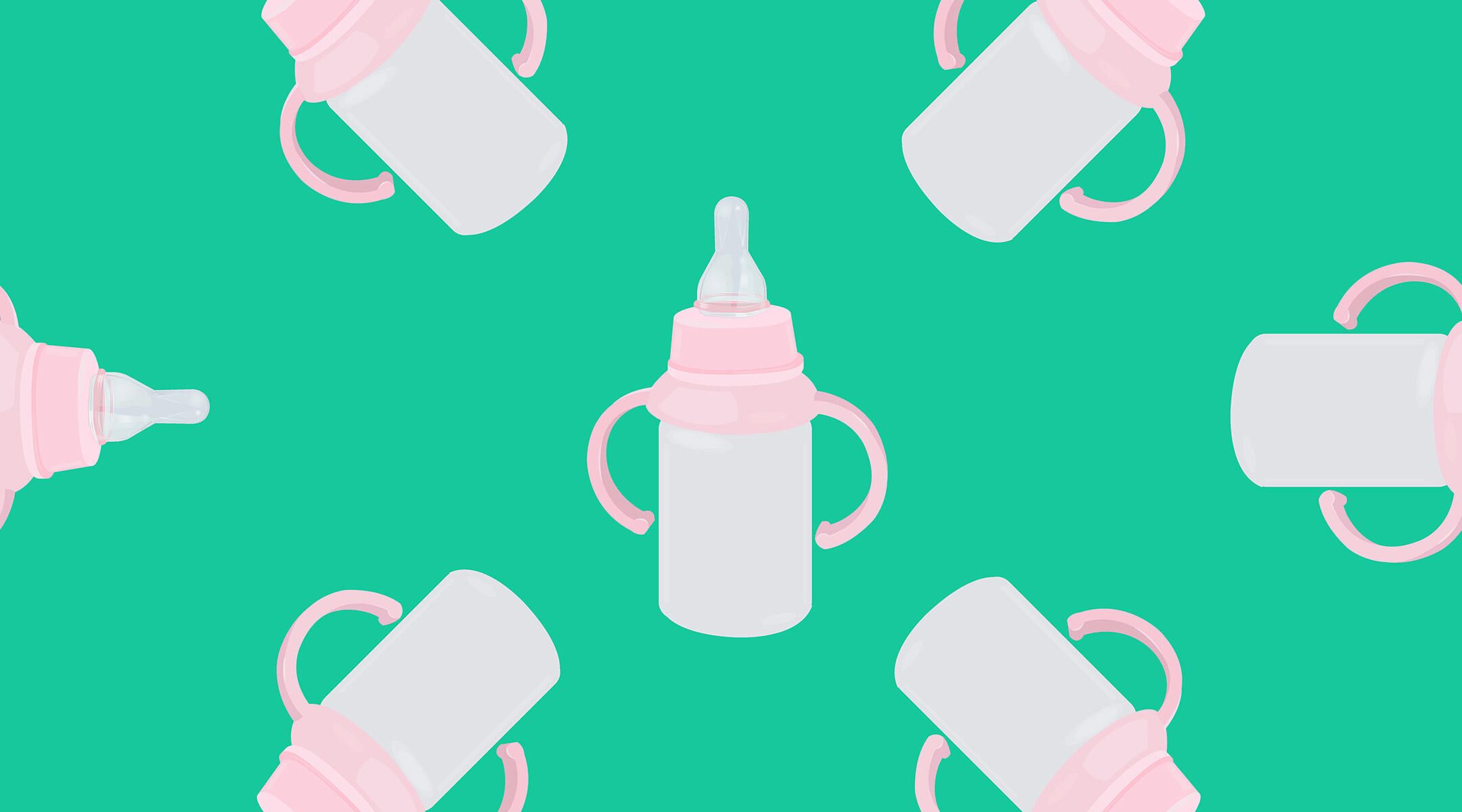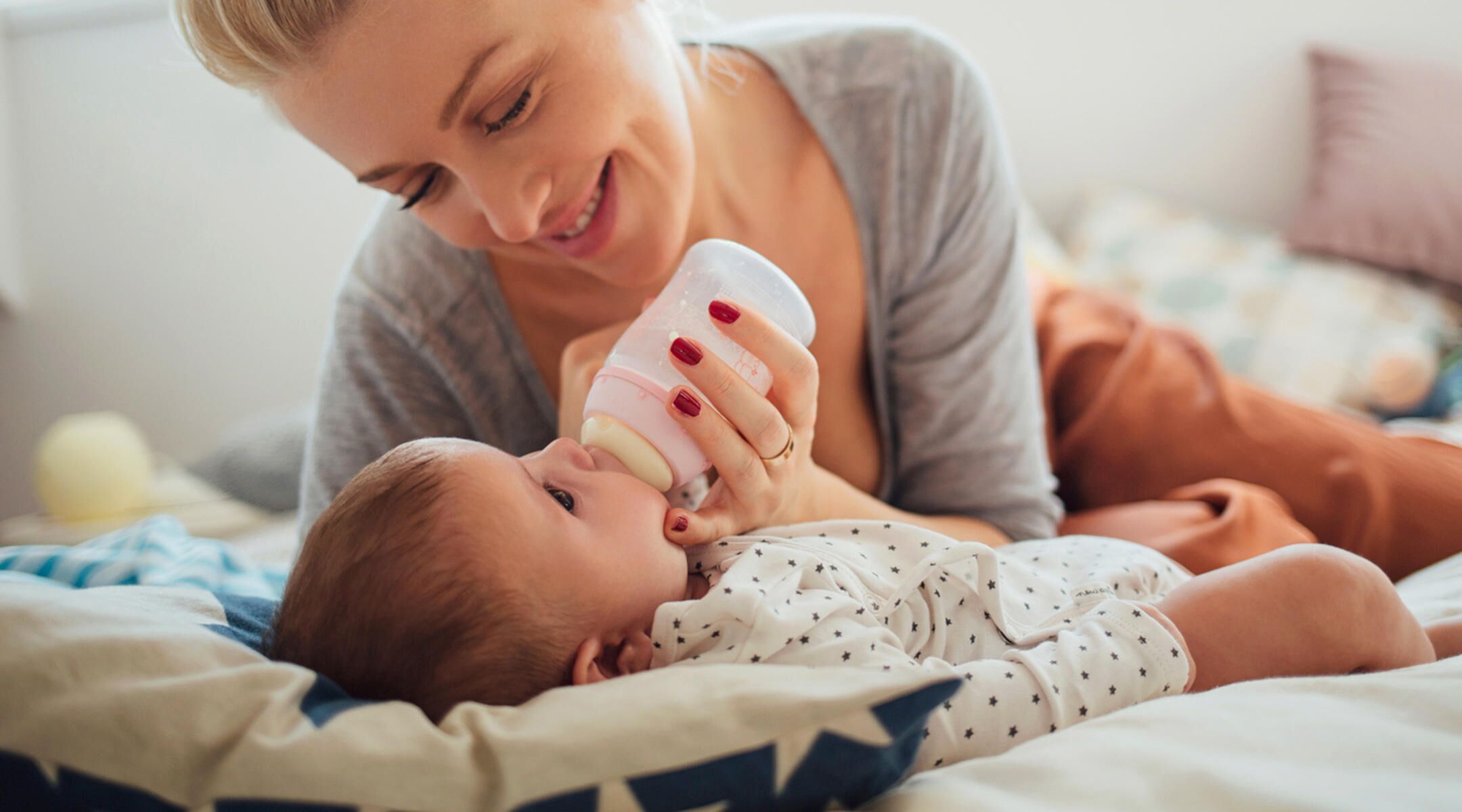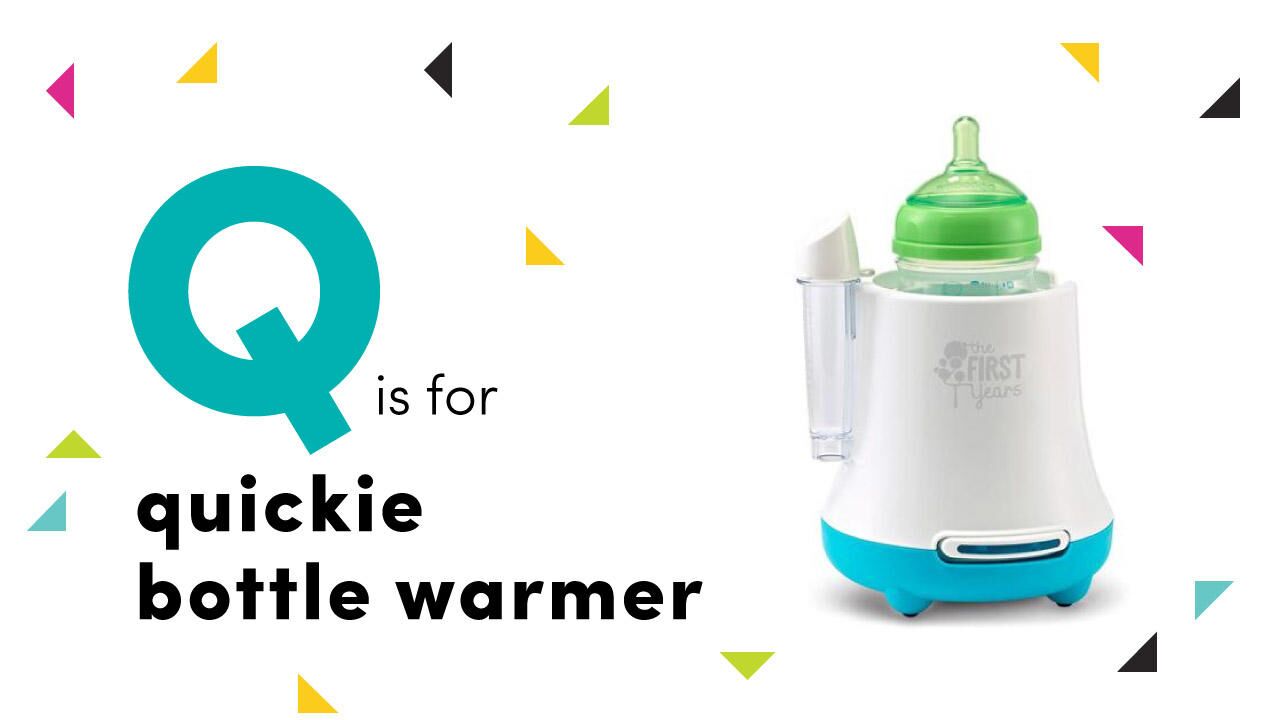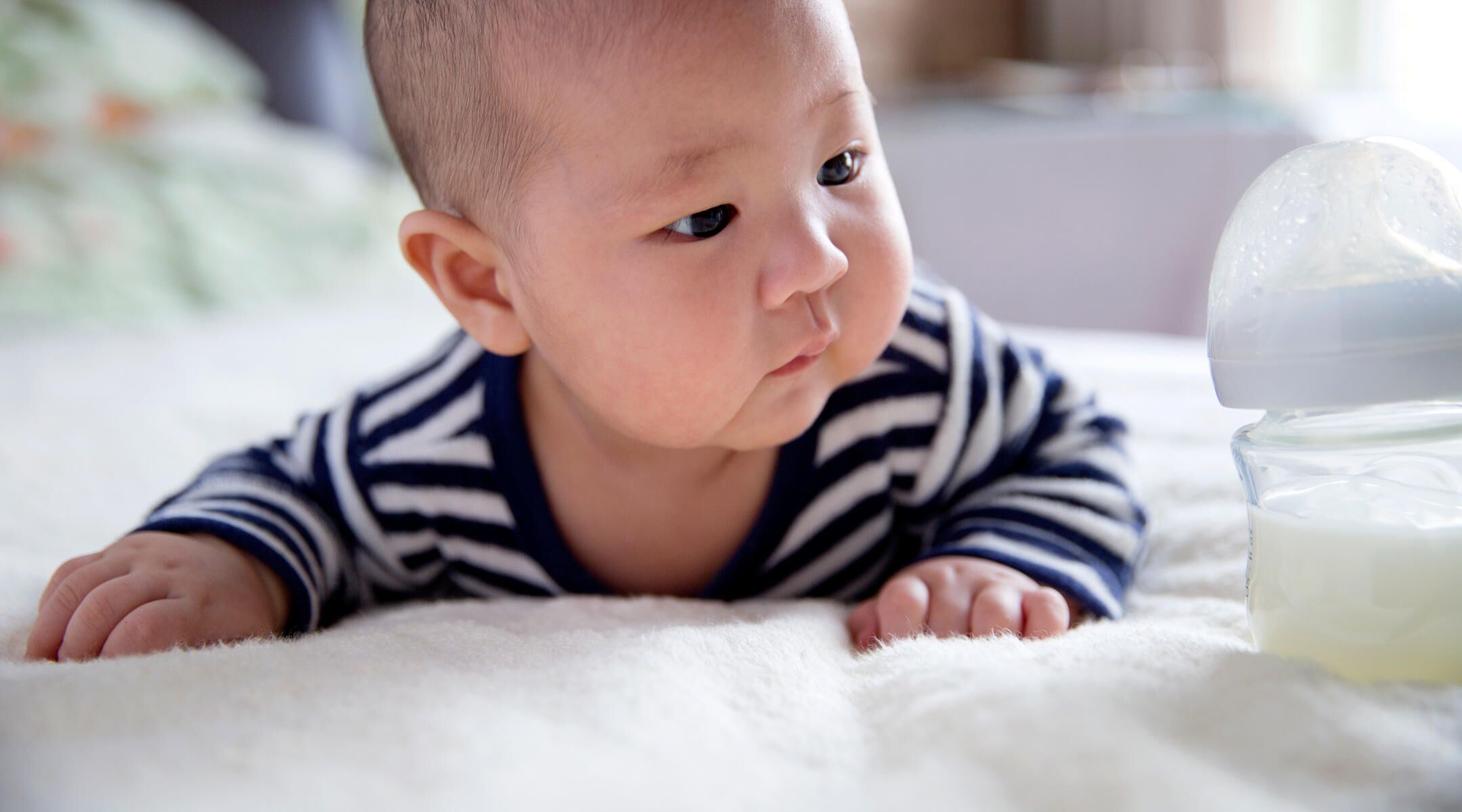When and How to Sterilize Baby Bottles
Once you’ve done your research and decided on the best bottles for baby, there’s still another step to consider: how to clean them. Whether you’ve chosen glass, plastic or silicone bottles, you’ll have to keep them as pristine as possible to protect baby’s developing immune system. If you listen to advice from your mother or grandmother, you might be fretting over how to sterilize baby bottles—but nowadays sterilizing baby bottles isn’t absolutely necessary, except in certain situations. “This practice is a bit outdated now that the majority of homes in developed countries use treated municipal water,” says Caitlin Hoff, a health and safety investigator for ConsumerSafety.org. “There are, however, some cases in which you might want to sterilize a bottle.” Here, we break down when sterilizing baby bottles is a good idea and the best methods for the job.
Sterilizing baby bottles is an added step beyond traditional cleaning that provides extra protection against germs. And generally speaking, it’s a one-and-done deal. “When you first buy bottles, it’s important to sterilize them at least one time,” says Samira Armin, MD, a pediatrician at Texas Children’s Pediatrics. After all, you don’t know where that bottle was before it was packaged and sold to you, so an initial sterilization is a quick, easy way to ensure baby’s health and safety. “After that, it’s no longer necessary to sterilize bottles or their accessories,” she adds. “Many years ago, when water supplies weren’t reliably clean, baby items required sterilization, but nowadays this is thankfully not an issue.”
That said, there are instances when you might want to sterilize baby’s bottle beyond that first use. According to Hoff, these include:
- If you’re using borrowed or second-hand bottles. With all the gear and supplies that babies require, some moms hit up consignment shops or borrow baby bottles from a friend. In these cases, it’s critical to sterilize pre-used bottles before giving it to your child for the first time. The same goes for bottles that have been used for older siblings in your own home.
- If baby was premature or has health issues. According to the Centers for Disease Control and Prevention (CDC), sterilization is particularly important if baby was born prematurely or has a weakened immune system.
- If you don’t have access to clean drinking water. If your home isn’t part of a municipality with clean drinking water, you use well water or you’re traveling in a country with questionable water, you may need to sterilize baby’s bottles often; once daily or even after each use would be prudent to avoid buildup of harmful microbes.
As long as you have good quality municipal drinking water that isn’t coming from a well, it’s not necessary (or even recommended) to sterilize baby’s bottles too often. “Regular sterilization can potentially damage the bottle and allow chemicals to leach into the milk, especially if the bottle has BPA in it,” says Daniel Ganjian, MD, a pediatrician at St. John’s Health Center in Santa Monica, California. The Food and Drug Administration (FDA) banned the use of bisphenol A, or BPA, in baby bottles back in 2012 due to concerns over the chemical’s impact on infant development—but if you’re using older plastic bottles, make sure they don’t have the recycling number 7 imprinted on the bottom.
How often to sterilize baby bottles is really up to you, so do what feels right for your family. If you use a dishwasher with hot water and a heated drying cycle to clean your child’s feeding items, sanitizing baby bottles by hand isn’t called for. Otherwise, for extra germ removal beyond standard washing, the CDC says you can sanitize bottles at least once daily.
When to stop sterilizing baby bottles
The CDC notes that it’s especially important to take precautions when baby is younger than 2 months old. To that end, if you’ve been sterilizing baby’s bottles daily, it’s typically fine to stop once your infant is 3 months old, since baby’s immune system isn’t quite so fragile anymore.
You should also stop sterilizing baby bottles and accessories if you notice any damage, Ganjian says. Glass bottles with cracks or chips should be tossed out, as should plastic bottles with splits, cracks, strong odors or any warping. Bottle nipples that have sustained noticeable wear and tear should always be replaced, since they can be a choking hazard.
Sterilization kills bacteria in bottles through the use of high temperatures or chemicals, Armin says, and one method isn’t superior to another. So when it comes to deciding how to sterilize baby bottles, choose an approach that works best for you and your budget. Read on for step-by-step instructions for how to sterilize baby bottles using various techniques.
Sterilizing baby bottles with boiling water
No special equipment required here! To sterilize baby bottles using boiling water, all you need is water and a pot. And don’t worry—it’s fine to sanitize plastic bottles using this method. (Just remember that bottles should be cleaned with soap and water beforehand.)
- Fill a large, clean pot with enough water to cover the bottles.
- Submerge the freshly washed bottles in the water upside down, making sure there aren’t any air bubbles at the bottom.
- Bring the water to a boil.
- Boil the bottles for five minutes (check manufacturer guidelines for variations).
- Turn the heat off and remove the bottles using tongs.
- Place them on a clean, dry dishcloth and allow them to air dry.
Sterilizing baby bottles in the microwave
Another super-easy approach to sterilizing baby bottles? Using your microwave’s steam power! Here’s how to sterilize baby bottles in the microwave without any other special equipment:
- Start with a clean microwave.
- Fill bottles about halfway with water.
- Microwave on high for one to two minutes.
- Using oven mitts, remove bottles from the microwave, dump remaining water out and let the bottles air dry.
Another option is to purchase a microwave baby bottle sterilizer. This type of sterilizer also harnesses the power of steam, but it encloses the bottles in a plastic casing to give them a more thorough cleansing. These handy sterilizers are widely available and typically cost about half as much as the better-known electric baby bottle sterilizers.
Sterilizing baby bottles with electric steam
If you know you’ll sleep easier if baby’s bottles are sterilized regularly, you may want to spring for a countertop bottle sterilizer. Steam sterilization can reach higher temperatures than boiling water, so it can kill more bacteria and mold, Ganjian says.
Though they’re a bit more pricey than any of the other options, electric baby bottle sterilizers are probably the quickest, easiest option if you want (or need) to sanitize bottles frequently. Simply follow the instructions provided by the manufacturer. Plus, they can be used to sanitize bottles, bottle parts, nipples and more. Many moms even use these for small plastic toys and teething rings once baby outgrows the bottle stage. That’s knowing how to stretch a dollar!
Sterilizing baby bottles with bleach
If you’re in a pinch and don’t have access to boiling water, steam or a dishwasher, the CDC condones the use of bleach to clean baby bottles. Here’s how to sterilize baby bottles with this method:
- Combine 2 teaspoons of unscented bleach with 16 cups of hot water.
- Submerge bottles in the solution, taking care to avoid any air bubbles in the bottom of the bottles.
- Soak bottles for two to five minutes, then remove with clean tongs.
- Place bottles on a clean dish towel to air dry. There’s no need to rinse, Armin says: “Any remaining bleach will break down quickly during the air-drying process and will not harm baby.”
Sterilizing baby bottles using sterilizing tablets
Wondering how to sterilize baby bottles when you’re away from home and don’t have access to your normal equipment? Food-grade, chlorine-based sterilizing tablets are just as effective at removing all the same microbes as the other sterilization techniques above. Be sure to follow the instructions on the packaging to ensure proper sterilization.
Regardless of whether you decide to sterilize baby’s bottles, you’ll still have to thoroughly clean them after every feeding. “Newborns and infants have underdeveloped immune systems are vulnerable to infections by viruses, bacteria, parasites and fungi, which can all lead to illness. These germs can grow quickly if breast milk or formula is added to a partially used bottle that hasn’t been well cleaned,” Armin says. “Washing items thoroughly with hot water and soap is all that’s required to remove most harmful germs from bottles.” You can choose to wash bottles and their parts by hand or in the dishwasher. Here’s how:
Cleaning baby bottles in the dishwasher
Are your baby bottles dishwasher safe? Good news: Using your dishwasher’s hottest water setting and a heated drying cycle effectively sterilizes the bottles!
- Separate all bottle parts.
- Rinse the bottles and parts with clean water to remove any milk particles.
- Place all small parts (including rings, valves and nipples) in a dishwasher-safe basket to prevent them from falling to the bottom of the dishwasher.
- When possible, run the bottles on a hot-water cycle and heated drying cycle or select the sanitizing setting.
- Remove the bottles and parts from the dishwasher and allow to air dry on a clean dishcloth.
Cleaning baby bottles by hand
When cleaning by hand, the CDC recommends washing the bottles and their parts in a special container that’s only used for bottles, rather than having bottles come in contact with the sink, to prevent cross-contamination. You should also use a bottle brush or other cleaning utensil that’s set aside just for baby’s bottles.
- Start with clean hands.
- Separate the bottles and their parts and rinse each piece under running hot or cold water to remove any milk particles. Don’t set the bottles down in the sink.
- Fill a clean basin with hot water and soap.
- Scrub the bottles and parts with a bottle brush, taking care to thoroughly clean all the way to the bottom of the bottle.
- Clean inside the nipples, making sure to flush water through the tiny holes at the tips.
- Rinse again under running water.
- Air dry on a clean dishcloth.
Please note: The Bump and the materials and information it contains are not intended to, and do not constitute, medical or other health advice or diagnosis and should not be used as such. You should always consult with a qualified physician or health professional about your specific circumstances.
Plus, more from The Bump:
Caitlin Hoff is a health and safety investigator for ConsumerSafety.org, where she educates families about important consumer topics that impact the general public’s health and safety. She holds a certification in CDC Health Literacy for Public Health Professionals.
Samira Armin, MD, FAAP, is a pediatrician at Texas Children’s Pediatrics. She earned her medical degree from St. George's University in 2009 and specializes in newborns and healthy eating.
Daniel Ganjian, MD, is a pediatrician at Providence St. John’s Health Center in Santa Monica, California. He earned his medical degree from the University of California, Irvine, in 2004 and is a member of the Alpha Omega Alpha honor society, a designation given to just 10 percent of American physicians.
Centers for Disease Control and Prevention (CDC), How to Clean, Sanitize and Store Infant Feeding Items, February 2023
Learn how we ensure the accuracy of our content through our editorial and medical review process.
Navigate forward to interact with the calendar and select a date. Press the question mark key to get the keyboard shortcuts for changing dates.
































